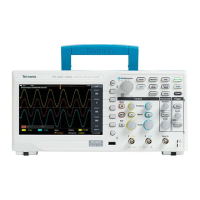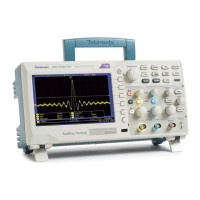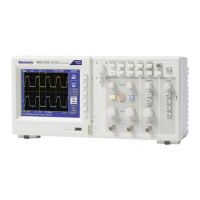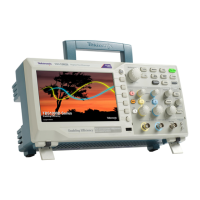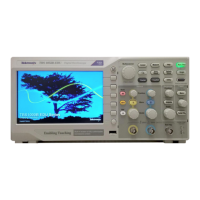Theory of Operation
Main Board
The Main board is also called the acquisition b oard. The Main board of the
4-channel oscilloscope is essentially two 2-channel oscilloscopes tied together
throughacommonmicroprocessor,andsome special interconnects to support
combining the display a nd trigger system s. The focus of the Main board
discussion
is the 2-channel system, with differences for the 4-channel models
noted as ne cessary.
At a minimu
m, the Main board contains attenuators, an amplifier AS IC, a
digitizer/trigger system ASIC, a signal processing/display/system services FGPA,
RAM, flash PROM, a system microprocessor, USB controller, USB RAM, system
communication RAM, and special pow er supplies. For a 4-channel oscilloscope,
the attenuators a re duplicated. Most of the other aspects of the circuitry remain
unchanged.
Acquisi
tion System
Signals from the channel 1 and channel 2 and other input connectors pass through
attenuators and an AC-coupling switch to the amplifier ASIC. The Ext Trig input
has an abbreviated version of this p ath, lacking some of the attenuator s ettings
and th
e AC coupling switch.
The amplifier ASIC contains buffers and variable gain amplifiers, as well as
filter
s that provide 20 MHz bandwidth limiting. The task of the amplifier ASIC
is to convert from a 1 MΩ single-ended environment in the front end to a much
lower impedance differential (and thus less noise-sensitive) environment for the
acquisition process. The amplifierASICassuresthattheinputsignalisamplified
to a level that will allow the fullest possible use of the digitizer.
The acquisition ASIC contains samplers and peak detectors for each input
channel, a common amplifier, an A/D converter, and the trigger logic. The
digitized waveform samples are transferred to the processing and display FGPA.
I
n 4-channel systems, the two acquisition ASIC’s are interconnected so that a
trigger in one ASIC can cause a trigger on the other.
T
he processor system adds the microprocessor and flash PROM to the processing
and display system. The processor system interprets the front-panel control
changes detected by the display ASIC, provides control parameters base d on
user setting requests, computes waveform measurements, and manages the USB
interfaces via the dedicated USB controller. Saved setups, waveform s, and
calibration constants are stored in nonvolatile memory sections within the flash
PROM. T he processor system shares DRAM with the display system.
TBS1000 Series Oscilloscope Service Manual 3–3
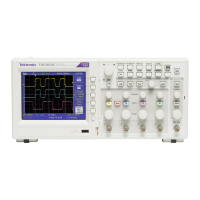
